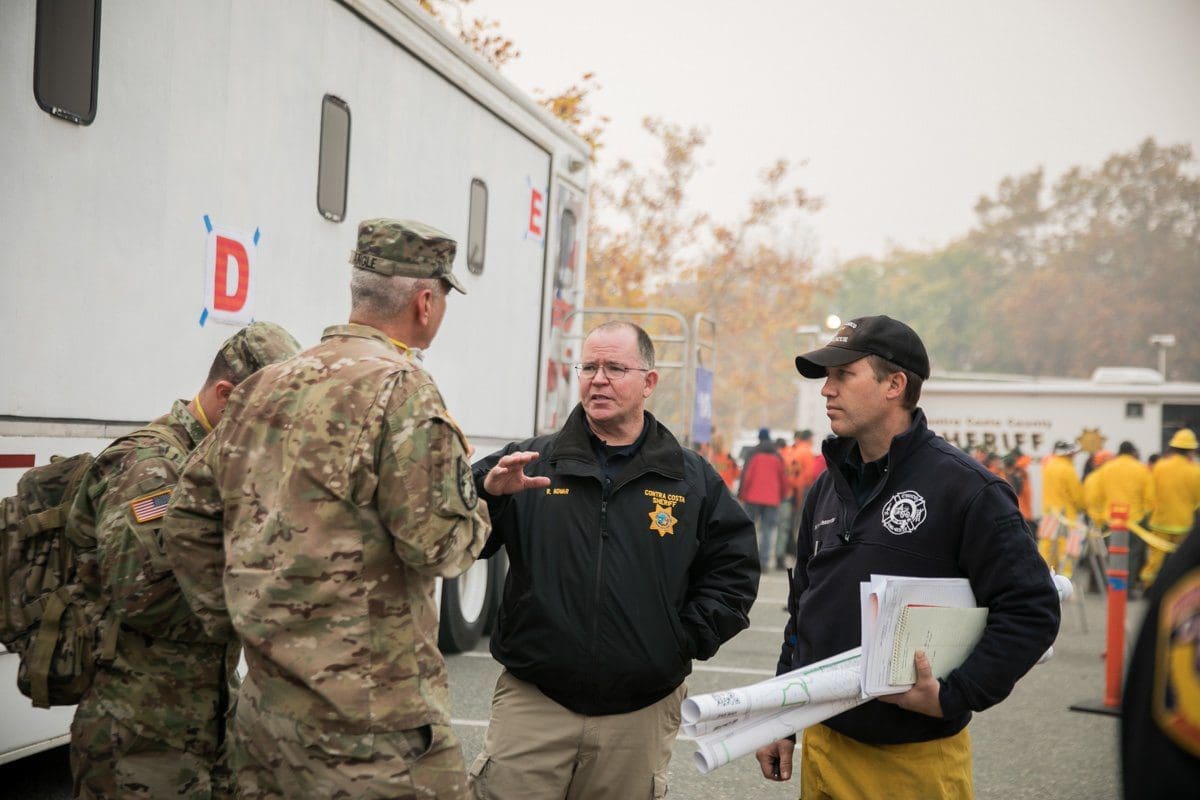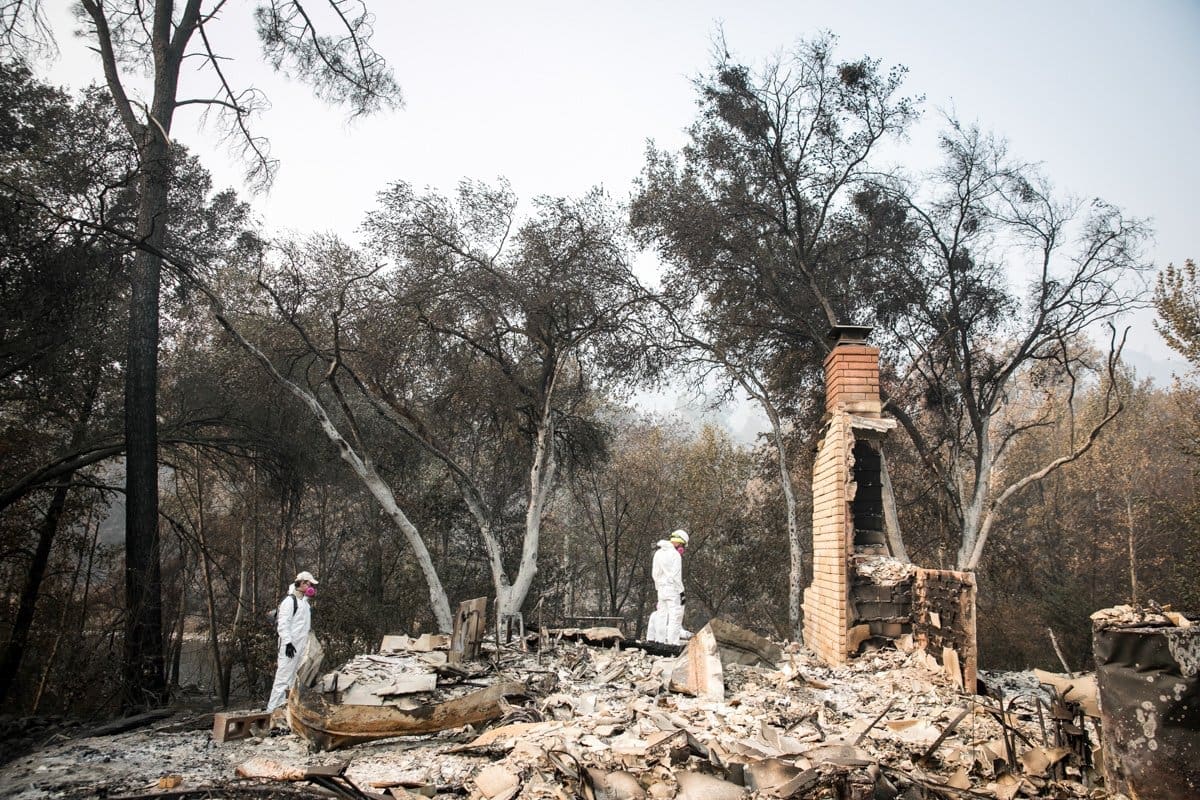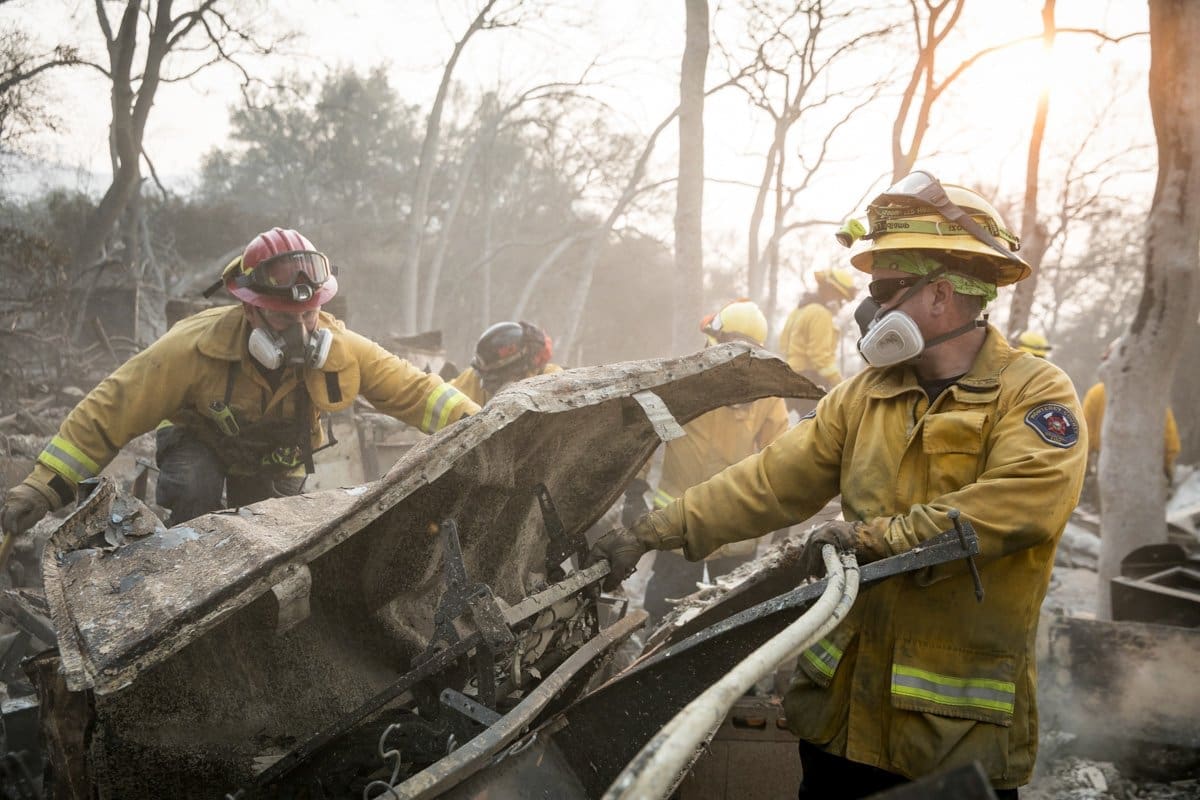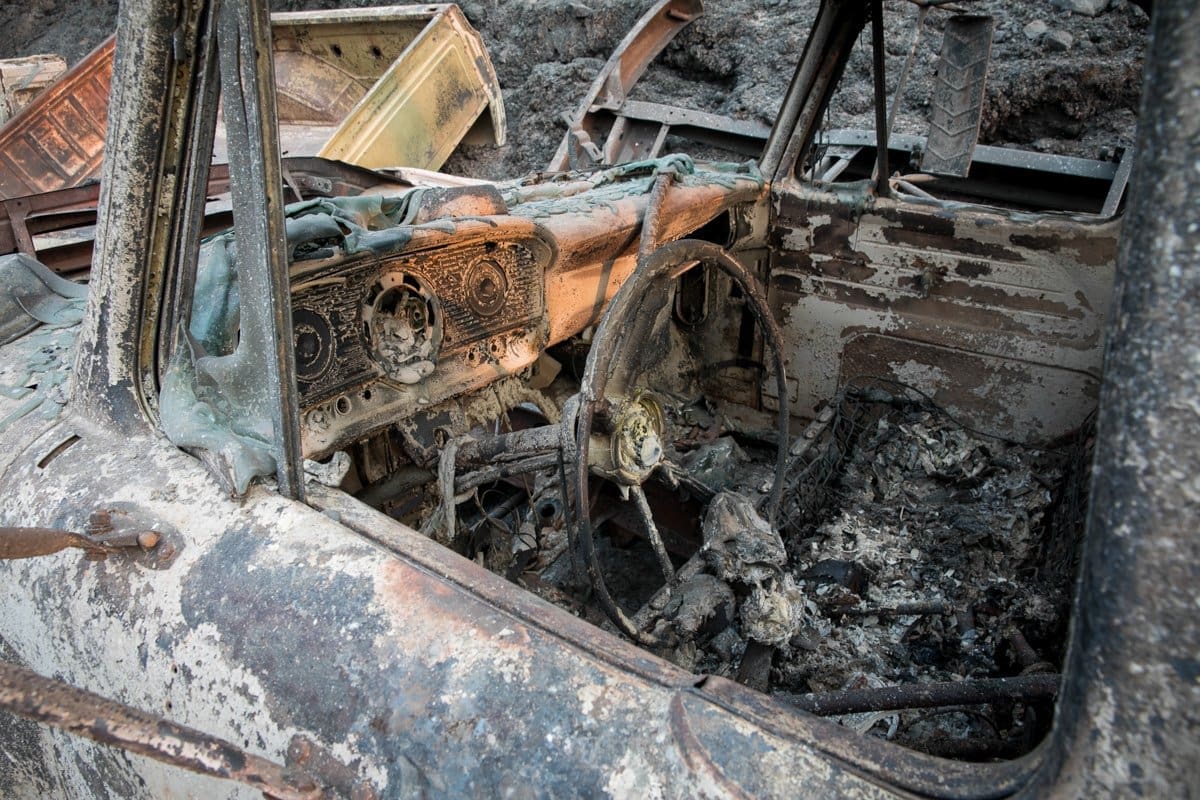camp fire
On November 8th, 2018, the Camp Fire started in Northern California’s Butte County. Ignited by a faulty electric transmission line, it exploded in size due to extreme drought and intense winds. The towns of Paradise and Concow were nothing short of completely destroyed, each losing about 95% of their structures. The fire caused at least 85 civilian fatalities and covered an area of 153,336 acres, with most of the destruction occurring within the first four hours.
Recovery efforts included our search and rescue team, mutual aid from counties across California, and federal agencies. The goal was to help locate those still missing once the fire was contained; however, between the intensity and speed of the fire and the few roads leading out of Paradise, many people became trapped or refused to leave the area. Walking through incinerated homes, we searched tirelessly for human remains in hopes of giving families peace in finding their loved ones, whether dead or alive. I felt complete heartache, combing people’s properties. I came across livestock and wildlife that didn’t have a chance to escape, and I saw firsthand the utter speed with which the fire spread and destroyed communities in its path.
One victim was reportedly seen by his neighbor trying to flee his trailer home when his car caught fire; he was forced to seek shelter in his home as he had nowhere else to escape. This was an unfortunate yet common story that we heard throughout our efforts and led to one of the reasons why the Camp Fire was unprecedented and required resources and search tactics never practiced before. An example – forensic anthropologists became part of SAR efforts to be able to determine human remains from animal bones.
One evening, while I was waiting in the decontamination shower line, I spoke to an anthropologist who said something I would never forget. While discussing the day’s horror and with tears in her eyes, she explained that her associates often refer to trailer homes as “easy bake ovens”. Her reference was in regards to how quickly and easily, these kinds of home structures can be destroyed in a fire and unfortunately, these communities were heavily populated with mobile homes. Of the 22,000 structures that were destroyed, 1,700 were mobile homes. Ridgeway Mobile Home Park, one of the first communities to be hit by the fire, was completely destroyed. Not a single home or contents within the homes were left standing.
This was the largest search and rescue effort in California and the largest in the United States since 9/11.























